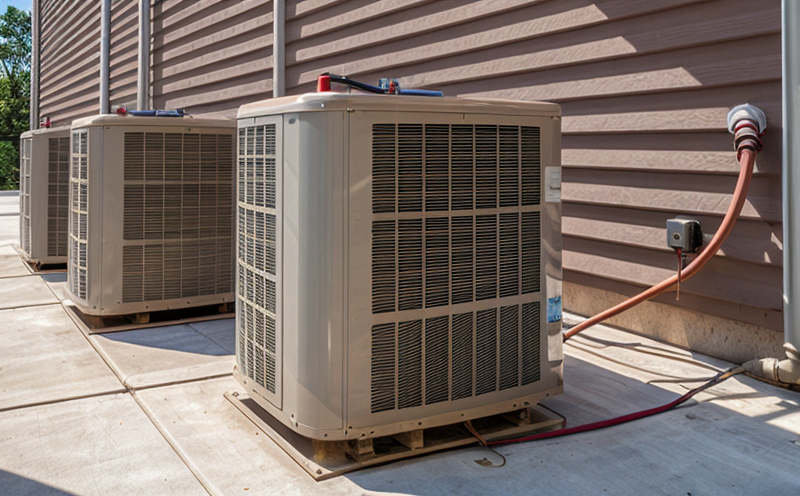ISO 16484-2 Building Automation and Control Systems
The ISO 16484-2 standard is a cornerstone in the assessment of building automation and control systems (BACS). This international standard provides comprehensive guidelines for the testing, commissioning, and performance evaluation of BACS to ensure they meet energy efficiency requirements. The standard is particularly relevant to facilities management professionals who are responsible for optimizing operational costs while maintaining occupant comfort.
The test scope under ISO 16484-2 includes a variety of systems such as heating, ventilation, and air conditioning (HVAC), lighting control, and security systems. The standard requires the testing of system components like sensors, actuators, controllers, and communication networks to ensure they function correctly in real-world conditions.
During the testing process, we follow a structured approach that begins with a thorough pre-test inspection. This includes reviewing system documentation, checking hardware configurations, and ensuring all software is up-to-date. The actual testing phase involves monitoring system performance under various scenarios to evaluate its efficiency and reliability. Key parameters such as energy consumption, response times, and fault detection capabilities are closely monitored.
For HVAC systems specifically, we conduct tests that simulate different environmental conditions to ensure the system can effectively manage temperature and humidity levels. This ensures that the building remains comfortable for occupants while minimizing energy waste. The testing also includes checks on the integration of various subsystems within the BACS, ensuring seamless operation between components like air handlers, chillers, and boilers.
Another critical aspect is the evaluation of system diagnostics and maintenance capabilities. This involves assessing how effectively the system can identify issues and provide actionable insights for timely repairs or upgrades. The standard also emphasizes the importance of system resilience and redundancy to prevent downtime in critical environments such as hospitals and data centers.
The ISO 16484-2 framework is not only about compliance with regulations but also about achieving long-term cost savings through optimized energy use. By adhering to this standard, facilities can expect improved operational efficiency, reduced maintenance costs, and enhanced occupant satisfaction.
- Environmental and Sustainability Contributions: Compliance with ISO 16484-2 leads to significant reductions in carbon emissions by optimizing energy consumption. This contributes positively to global sustainability goals while also benefiting local communities through reduced environmental impact.
- Economic Benefits: By ensuring systems are operating at peak efficiency, the standard helps facilities achieve substantial cost savings on utility bills and maintenance expenses over time.
Why It Matters
The importance of ISO 16484-2 cannot be overstated in today’s world where sustainability and energy efficiency are critical considerations. The standard ensures that buildings are equipped with the most advanced technology to meet current and future needs while minimizing operational costs.
For quality managers, compliance with this standard is essential for maintaining a high level of service and ensuring that all systems perform as expected. Compliance also provides assurance that the facility meets stringent international standards, thereby enhancing its reputation in the market.
Compliance officers play a crucial role in ensuring that the organization adheres to regulatory requirements. ISO 16484-2 helps them achieve this by providing clear guidelines on how to test and validate systems. This ensures that all aspects of the BACS are thoroughly evaluated, reducing the risk of non-compliance penalties.
R&D engineers benefit from this standard as it provides a benchmark for innovation and improvement in building automation technologies. By adhering to the standards set out by ISO 16484-2, they can ensure that their designs are robust, efficient, and capable of meeting future challenges.
For procurement professionals, compliance with this standard ensures that they source the best quality products and services for their projects. It helps in selecting suppliers who not only meet but exceed industry standards, leading to better performance and reliability of systems.
Customer Impact and Satisfaction
The impact of ISO 16484-2 on customer satisfaction is profound. By ensuring that buildings are equipped with efficient BACS, customers can expect a higher level of comfort and convenience. Occupants report increased satisfaction due to optimal temperature control, reduced noise levels from HVAC systems, and improved overall air quality.
Businesses also benefit from enhanced productivity as employees are more comfortable in their work environments. This leads to lower absenteeism rates and improved job performance. Additionally, customers appreciate the cost savings that come with efficient energy use, translating into lower utility bills over time.
The standard’s focus on sustainability is particularly appealing to environmentally conscious clients who value green initiatives. By choosing a facility compliant with ISO 16484-2, they are supporting a business commitment to environmental responsibility and long-term sustainability.





